Deep-C Mentors Team with High School Students on Oil Spill Research
|
|
February 25, 2014 -- The BP Deepwater Horizon oil spill may have been nearly four years ago, but scientists are still analyzing the after effects of the disaster that threatened the Gulf Coast. And now, they're bringing in high school students to help.
On February 28, a research team from Florida State University and the Massachusetts-based Woods Hole Oceanographic Institution (WHOI) will be joined by about 25 Pensacola-area high school students from West Florida High School of Advanced Technology to scour a nearby beach in Perdido Key for oil patties that formed as a result of the Deepwater Horizon blowout.
“An activity like this creates excitement for the students,” said Eric Chassignet, director of the Deep-C Consortium and the Center for Ocean-Atmospheric Prediction Studies, which houses the consortium’s efforts at FSU. “It’s real research. They’re out there with actual scientists, collecting samples. And it provides researchers with needed samples from the Gulf of Mexico.”
The Deep-C research project is a long-term study investigating the environmental consequences of oil released in the deep Gulf on living marine resources and ecosystem health.
“I cannot think of better vehicles to engage students than getting their hands dirty and learning how the world, in particular the ocean, works,” said Dr. Christopher Reddy, a WHOI marine chemist and scientist with Deep-C. "Working outdoors on a beach is a great way to get young scientists out of the classroom and into the field where they often develop a strong bond to the work. And when they know they are participating in something more than just another homework assignment, there is considerably more buy-in."
|
|
In November 2013, Deep-C educators Danielle Groenen and Amelia Vaughan began visiting the West Florida High School of Advanced Technology to work with Shawn Walker, a marine science teacher. The Deep-C mentors brought action-packed lesson plans that engaged and motivated students, which Walker very much appreciated: “Their hands-on lab activities, video presentations, relevant articles, and direct instructional approaches showed significant pre-planning and organizational skills. More important, was their genuine desire to make a positive and lasting impression on the students they are working with.”
Said Chassignet: “We are trying to determine what happens to the oil after it is released. Where does it go? How does it end up as patties along the beach? And how does it affect the local ecology?”
The Deepwater Horizon oil spill is considered the largest accidental oil spill in the history of the oil industry, dumping roughly 4.9 million barrels — or 210 million gallons — of oil into the Gulf of Mexico.
BP, as part of its cleanup efforts, set aside millions of dollars for research. The Deep-C Consortium, which consists of 10 universities and research institutions, received a three-year, $20 million grant from the Gulf of Mexico Research Initiative (GoMRI) to conduct research and educational outreach.
Amelia Vaughan, an education and outreach coordinator with Deep-C Consortium, has been making regular trips to Pensacola to help train students for the upcoming trip.
“It can be hard for students to conceptualize what science or what research is,” Vaughan said. “But with this, they’ll be out in the field seeing what it’s really like.”
Students, alongside their mentors from FSU and Woods Hole, will spend several hours at two sites on the beach collecting these oil patties and placing them in glass sample jars. These samples will then be immediately sent to Woods Hole for analysis. The samples collected during the GOO field study will be sent to WHOI for analysis in order to determine what they are comprised of and if they contain oil from the Deepwater Horizon spill. Through the on-line database, GOO volunteers will be able to track the results of their samples while Deep‐C scientists can use the data to further their research efforts.
"Project GOO is a fantastic opportunity for teachers to provide their students with real world applications of science concepts and skills learned in the classroom.” says Danielle Groenen, Deep-C outreach specialist and designer of the Project GOO curriculum which includes specially designed lesson plans geared toward understanding ocean science and oil spill research.
Read more about GOO:
- GoMRI Article: Oil Patty Research with Top Scientists Turns Students into Citizen Science Enthusiasts
- Woods Hole Oceanographic Institution (WHOI) Press Release: Scientists Train the Next Generation on Oil Spill Research
- Florida State University (FSU) Press Release: Scientists Team Up with High School Students on Oil Spill Research
- GOO Photo Gallery
The Deep-C (Deep Sea to Coast Connectivity in the Eastern Gulf of Mexico) Consortium is a long-term, interdisciplinary study of deep sea to coast connectivity in the northeastern Gulf of Mexico. The study is investigating the environmental consequences of petroleum hydrocarbon release in the deep Gulf on living marine resources and ecosystem health. Deep-C research is made possible by a grant from BP/The Gulf of Mexico Research Initiative. Deep-C Mentors Team with High School Students on Oil Spill Research
Deep-C was a four-year, interdisciplinary study of deep sea to coast connectivity in the northeastern Gulf of Mexico.Deep-C is no longer an active research project. The information on this website is for historical reference purposes only.
Home | About Us | Research Areas | Data Center | News & Multimedia | Education & Outreach
© Deep-C Consortium. All Rights Reserved.
This research was made possible by a grant fromThe Gulf of Mexico Research Initiative (GoMRI).
Copyright | Disclaimer | Privacy Policy
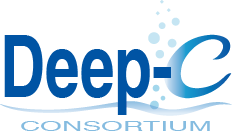
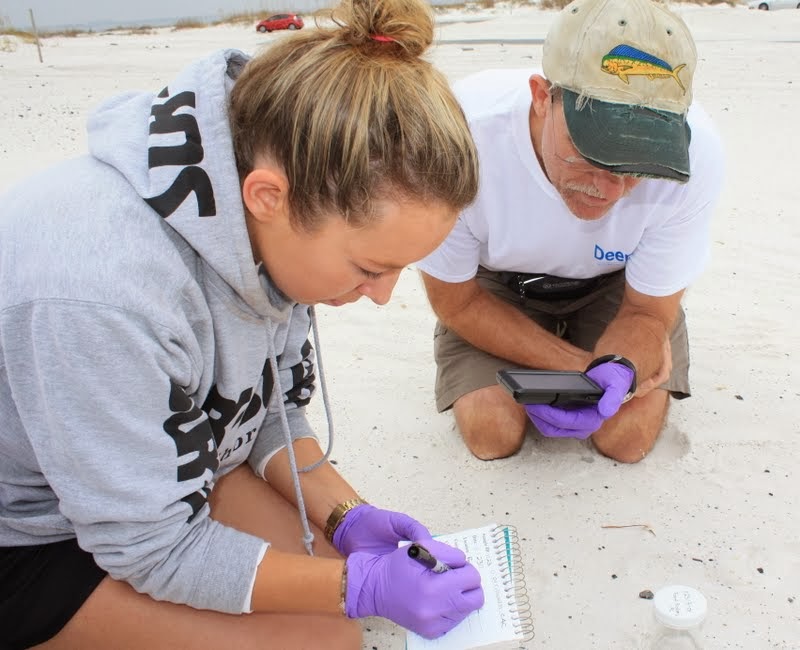 WHOI researcher Catherine Carmichael works alongside high school science teacher Shawn Walker to collect oiled sand patty samples for analysis. Walker's students from West Florida High School of Advanced Technology in Pensacola will conduct field work on Feb. 28 at Pensacola beaches as part of the Gulf Oil Observers (GOO) project led by the Deep-C Consortium. (Photo credit: Danielle Groenen, Deep-C Consortium)
WHOI researcher Catherine Carmichael works alongside high school science teacher Shawn Walker to collect oiled sand patty samples for analysis. Walker's students from West Florida High School of Advanced Technology in Pensacola will conduct field work on Feb. 28 at Pensacola beaches as part of the Gulf Oil Observers (GOO) project led by the Deep-C Consortium. (Photo credit: Danielle Groenen, Deep-C Consortium)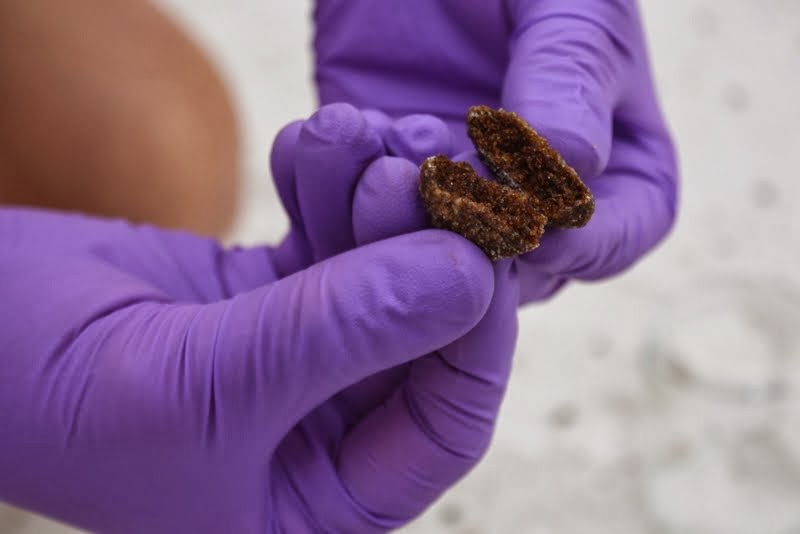
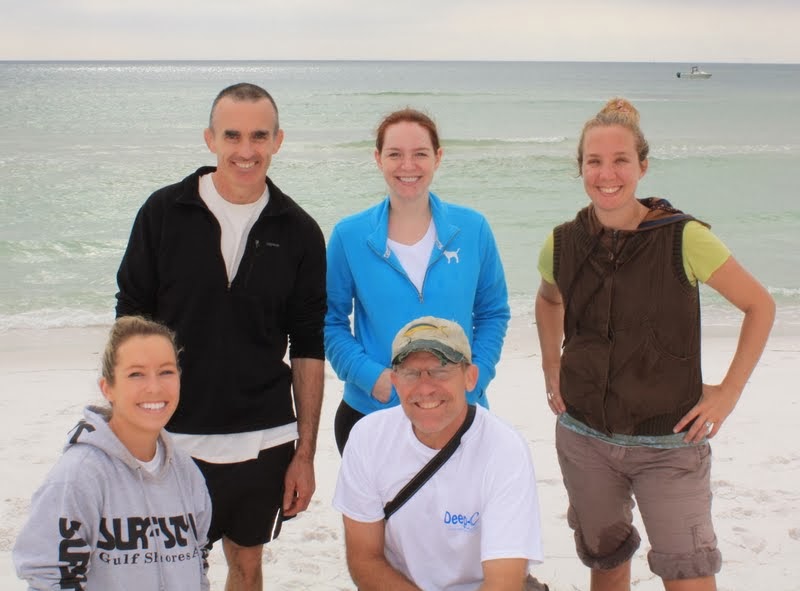
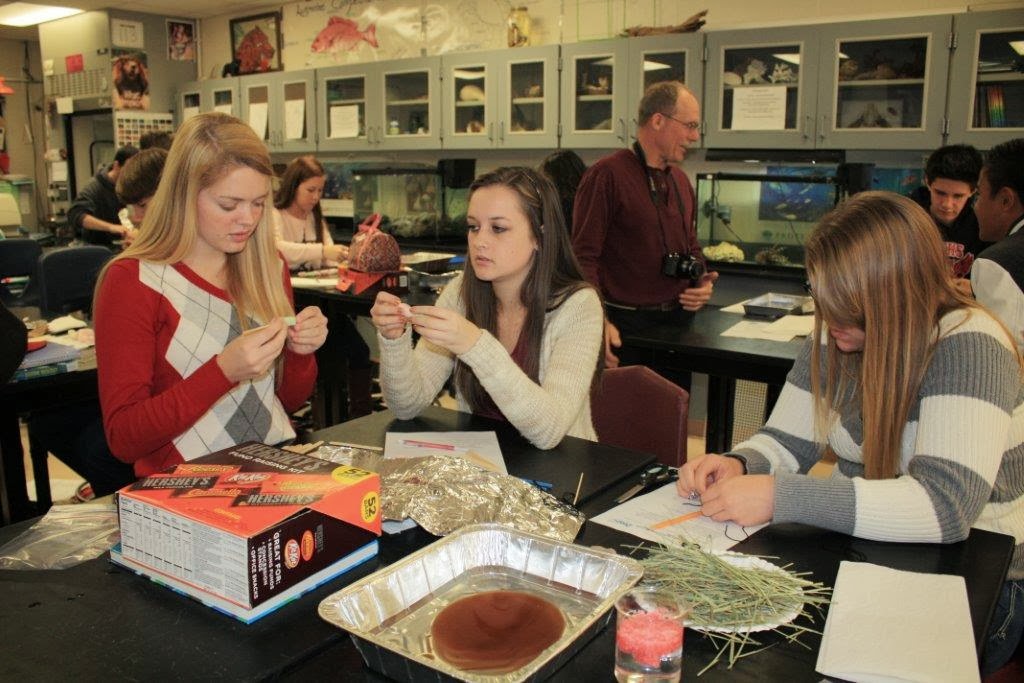 Students designing their methods of cleaning up the oil spill as part of a hands-on activity. (Photo credit: Danielle Groenen, Deep-C Consortium)
Students designing their methods of cleaning up the oil spill as part of a hands-on activity. (Photo credit: Danielle Groenen, Deep-C Consortium)